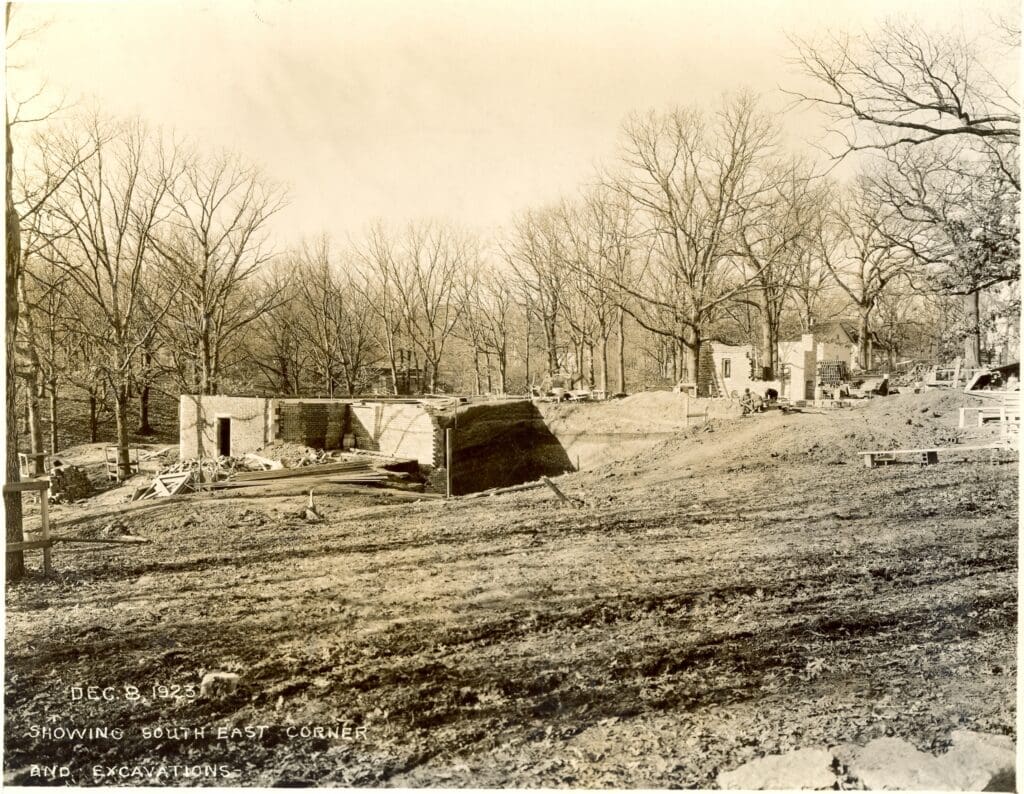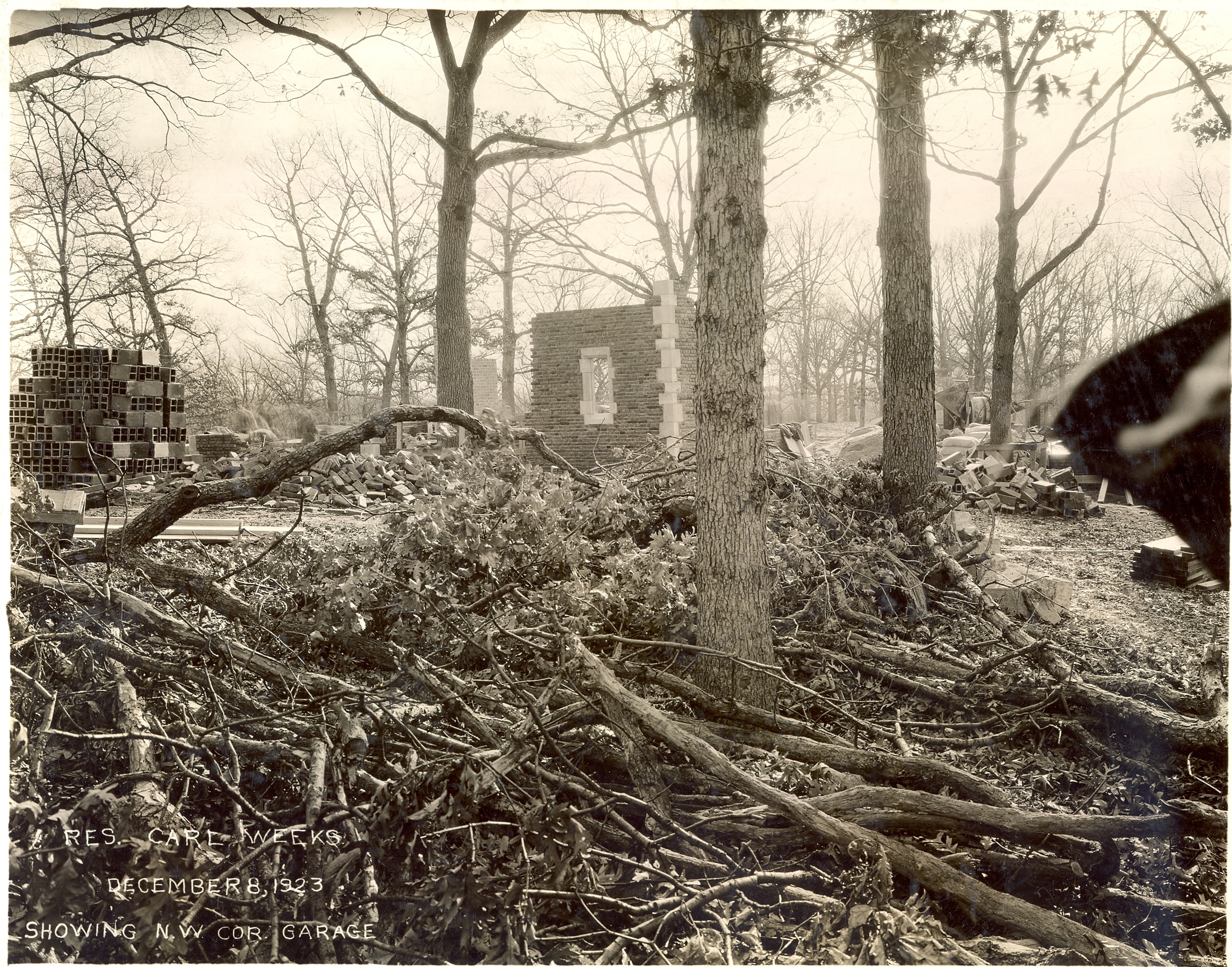

In the summer of 1923, Carl Weeks was venturing home after a day at the Armand Company factory and came upon workers tearing up High Street, located in downtown Des Moines. High Street had been approved for new paving in February of 1923 to improve grading and make safer intersections.

Carl was building a home historically inspired by an English manor known as the King’s House and had been sourcing materials from all over the world for the build. It has been said that once during construction, Carl announced, “If this house doesn’t look one hundred years old the day it is finished, we have failed.”
When High Street was being removed, Carl was still in the beginning stages of construction, finalizing plans and sourcing materials. Contractors would not break ground on Salisbury House until October of 1923. The High Street bricks, which had been in place for 20 – 25 years, had a distinctly worn quality that spoke to Carl’s intention of creating a new building the looked centuries old.
In Carl’s own words –
“One day in driving down town they were tearing up High Street. I looked at the brick and built about a ten foot wall two or three feet high. Then I went to the contractor and said, “What are you doing with the brick?” He said, “We are hauling them to the dump.” I said, “Why not let me haul it?” I did, and so all the handsome antique bricks in Salisbury House cost us the price of the hauling.”
Carl ended up taking almost two blocks of the old paving brick, a total of 90,000 bricks in all. On November 10th, 1923, workers laid the first bricks. Local men worked as bricklayers, masons, and plasterers and were paid anywhere from 70 cents to $1.35 per hour.
One house story passed down through the decades, states that when Carl saw how slowly the brick walls were going up, he told the workers that they would get an extra dollar for every brick they laid. Needless to say that after this, the walls flew up.
Today, the bricks from High Street can be seen primarily on the west side of the house – in the walls of the cottage, historic garage, and friendship hall.